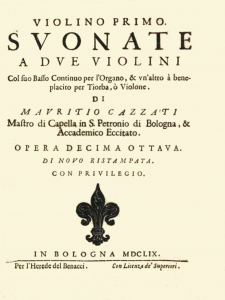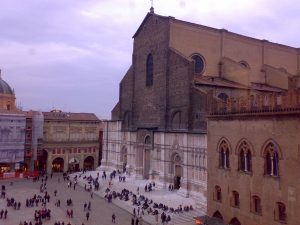Maurizio Cazzati (1616-1678)
Maurizio Cazzati was one of the most prolific and famous musicians of the 17th Century, yet he, along with the great music center of Bologna, are almost unknown today.
He was born in Lucera, a village in the duchy of Guastalla, northwest of Bologna near Mantua, Italy in the 1620s. He was ordained a priest and became the organist in Mantua in the Church of Sant’Andrea. The first publication of his music, consisting of psalms and masses for five voices and 2 violins, occurred in 1641. From there he went to Bozzolo, then Ferrarawith a two-year stint in Bergamo.
In 1657, he was appointed the maestro di cappella for the San Petronio cathedral in Bologna. He published a large amount of instrumental music that was known and performed in places as far away as England. Under his direction, the music performed in San Petronio attained a spectacular state.


Cazzati held a stormy position at the basilica. It started with changes he made in the arrangements of the players. Also, he was regarded as a foreigner by some of the musicians. Thirty-five of the forty-six musicians employed at the basilica resigned within a few months after he took over. In 1666, the Accademia Filarmonica was founded by Bolognese musicians as a statement of opposition to Cazzati, who was finally dismissed from his position at San Petronio in 1671, after a feud with Accademia Filarmonica founding member Giulio Cesare Arresti who had objected to a Kyrie that Cazzati had composed, feeling that its music did not conform with the rules that had been set by the theorists. Cazzati was then appointed maestro of both the chapel at Mantua and the chamber of the duchess Anna Isabella. He died in Mantua in 1678.
